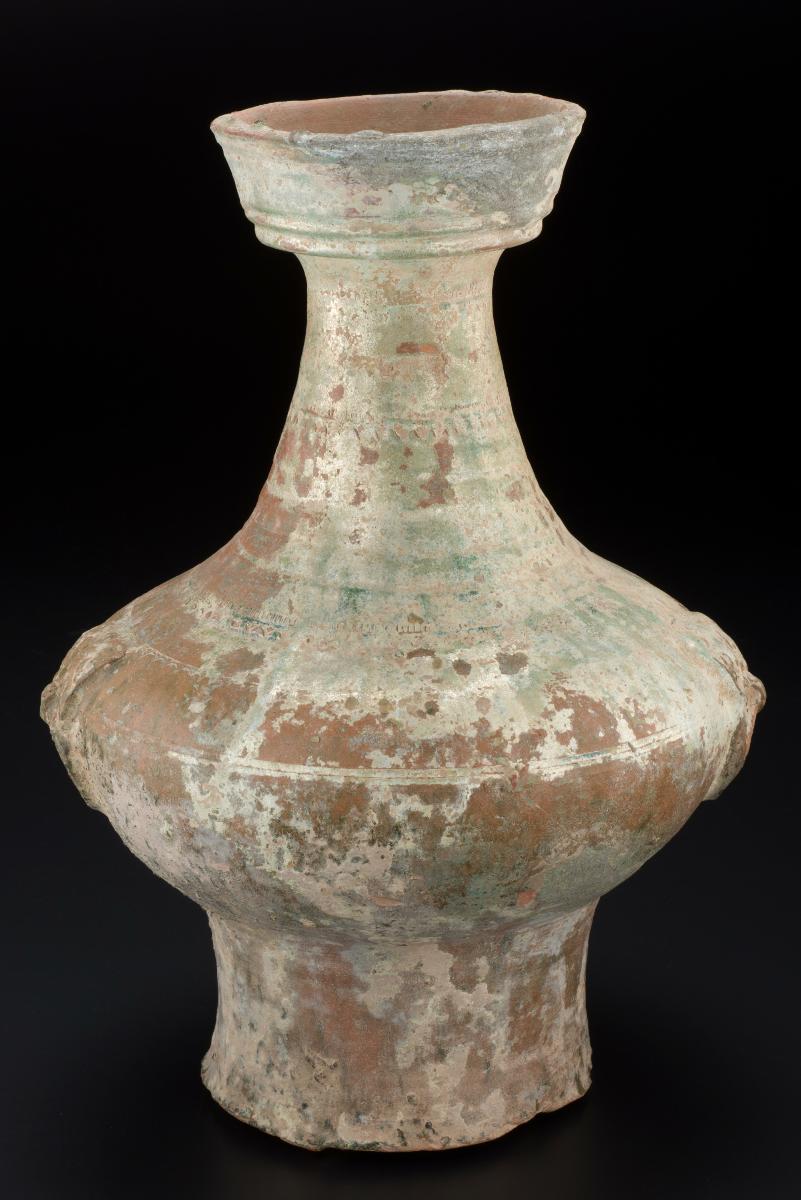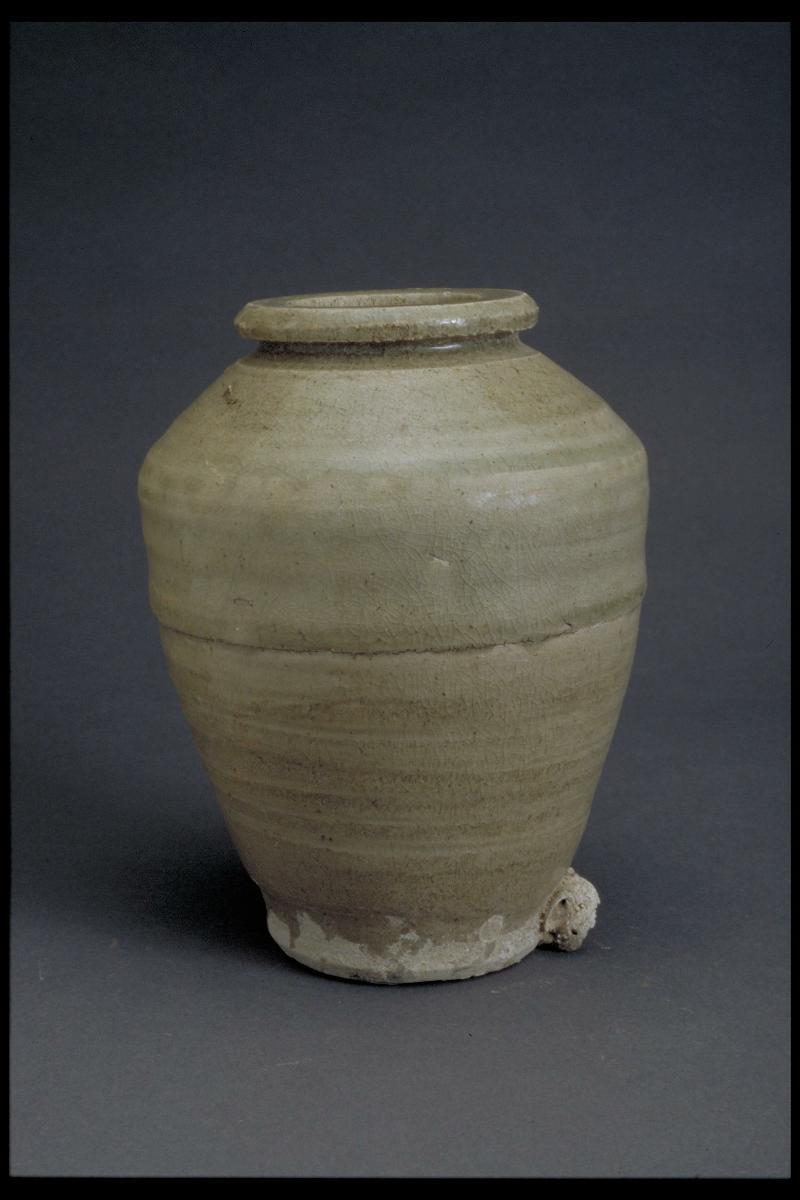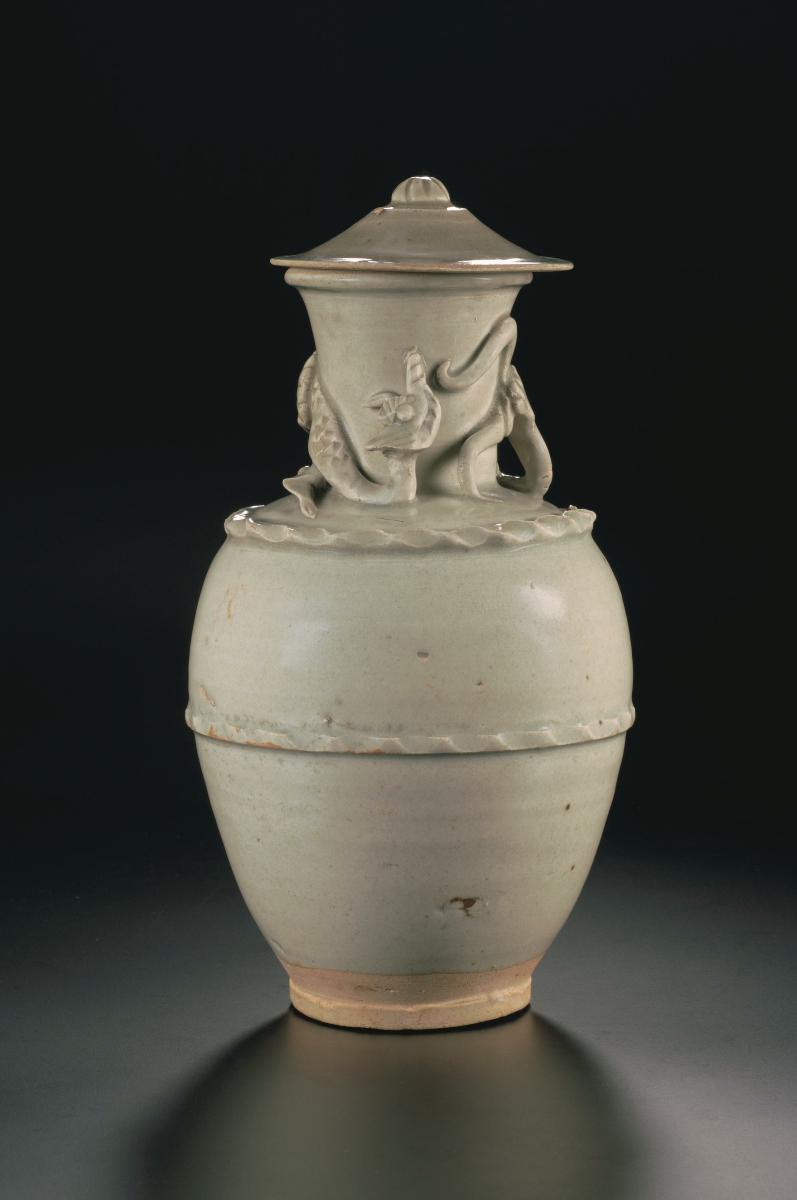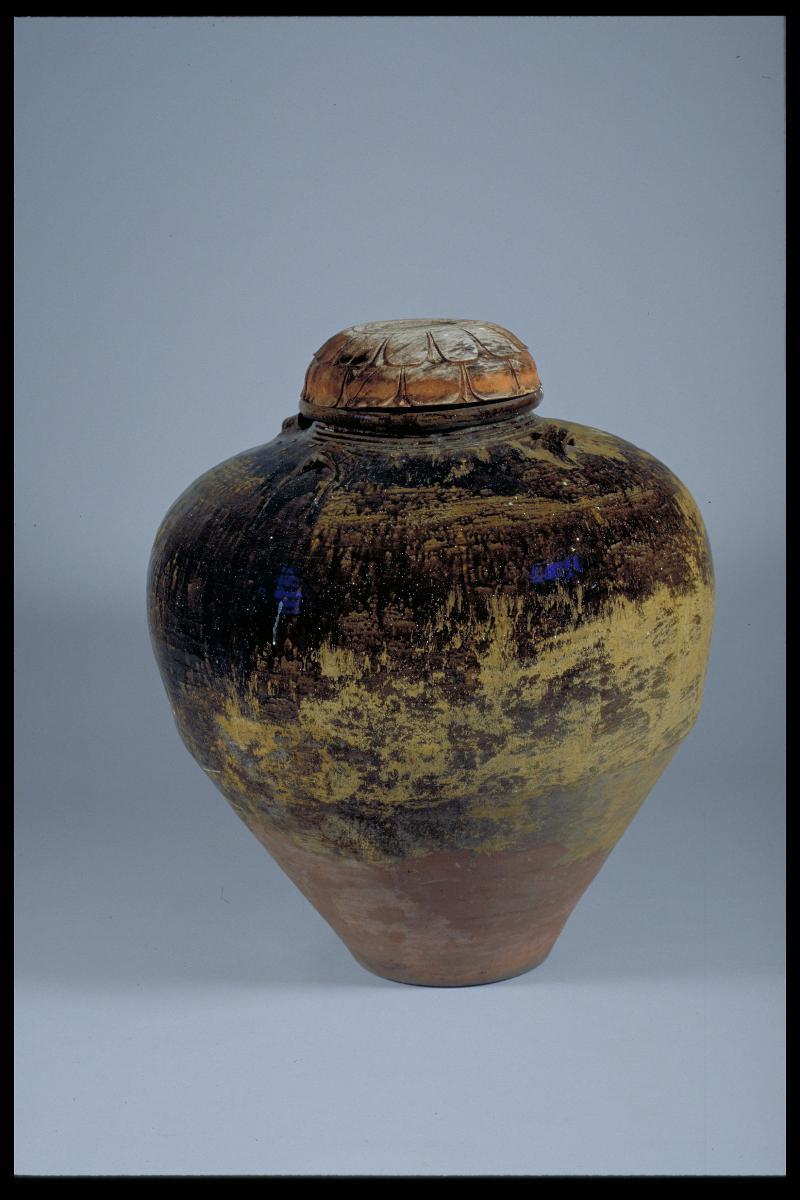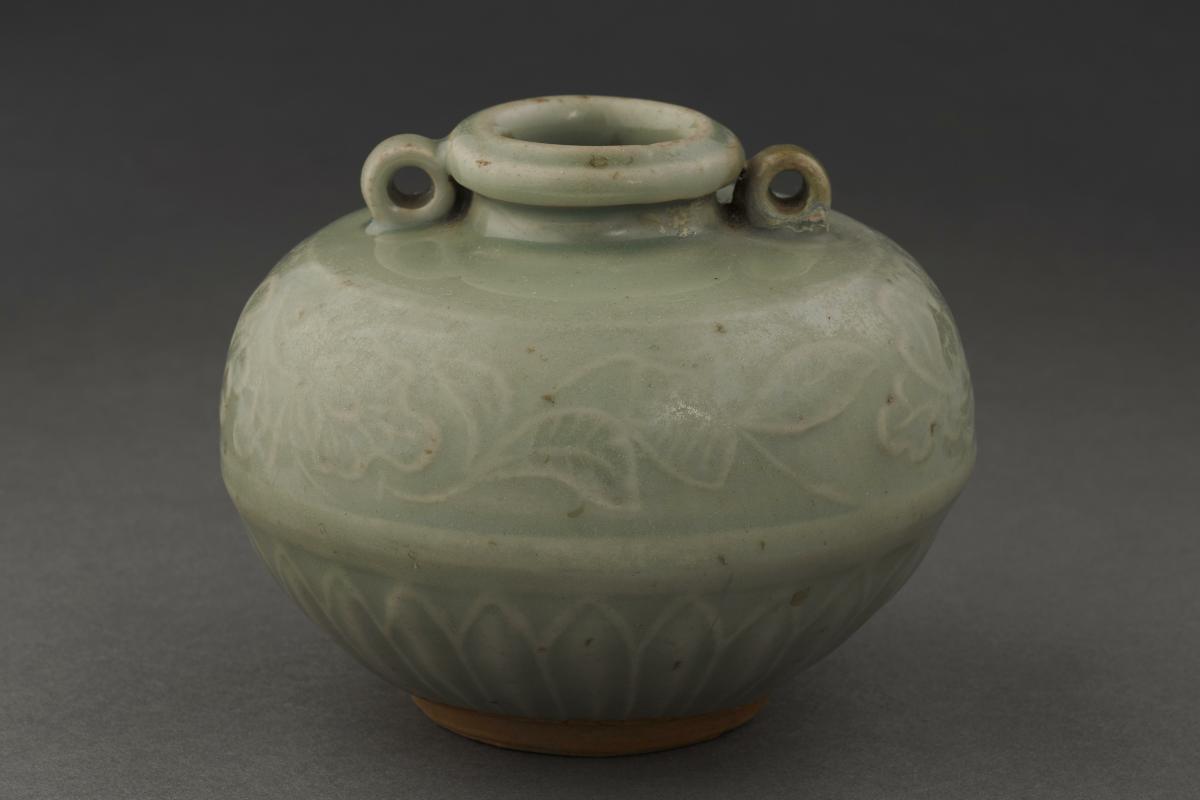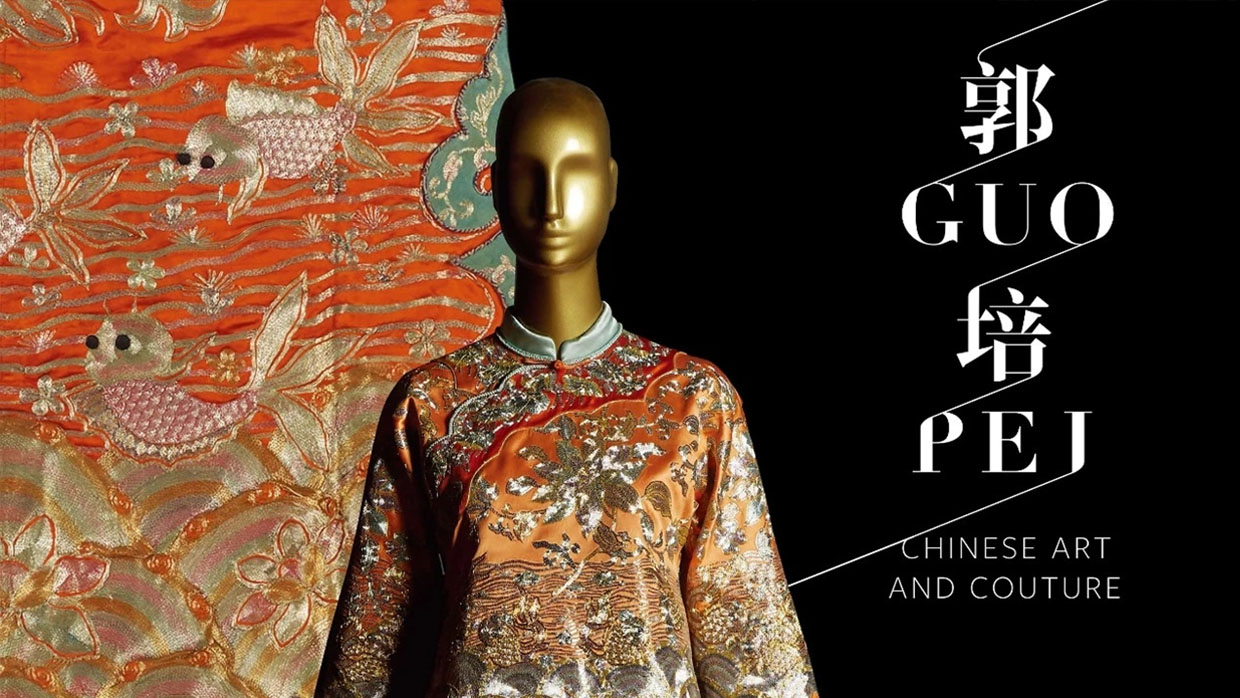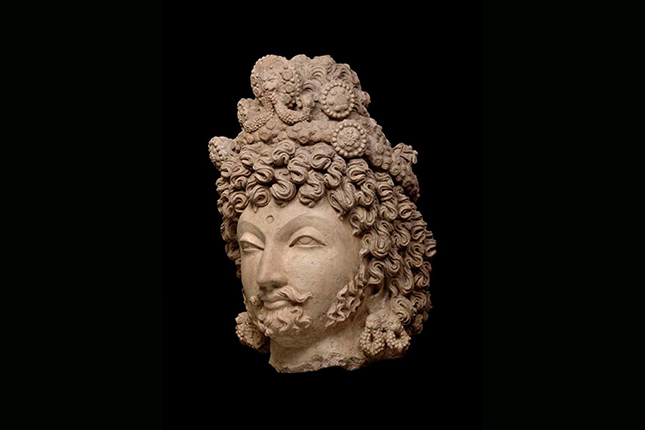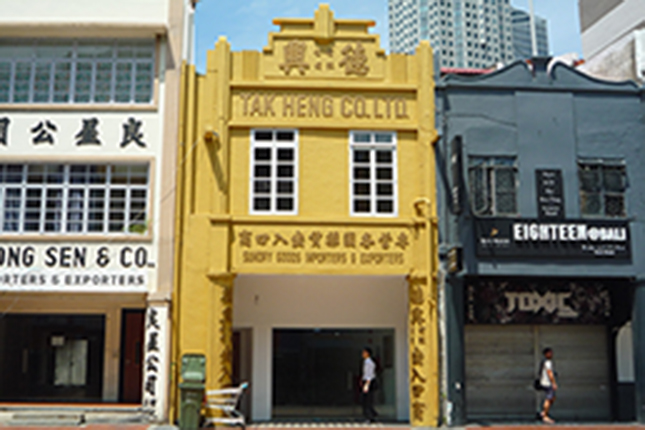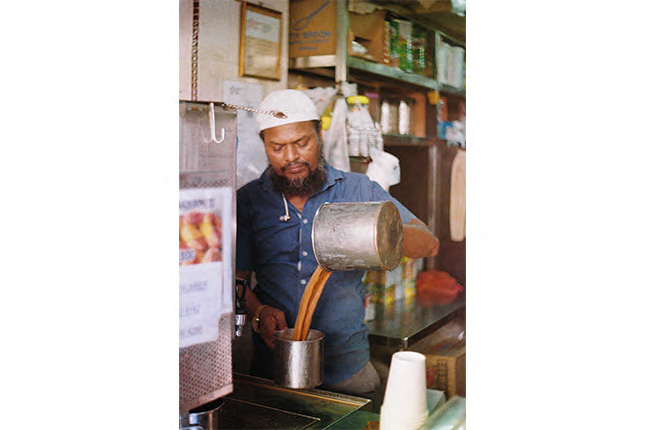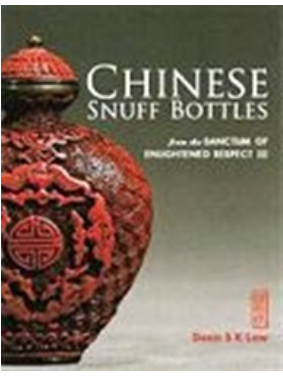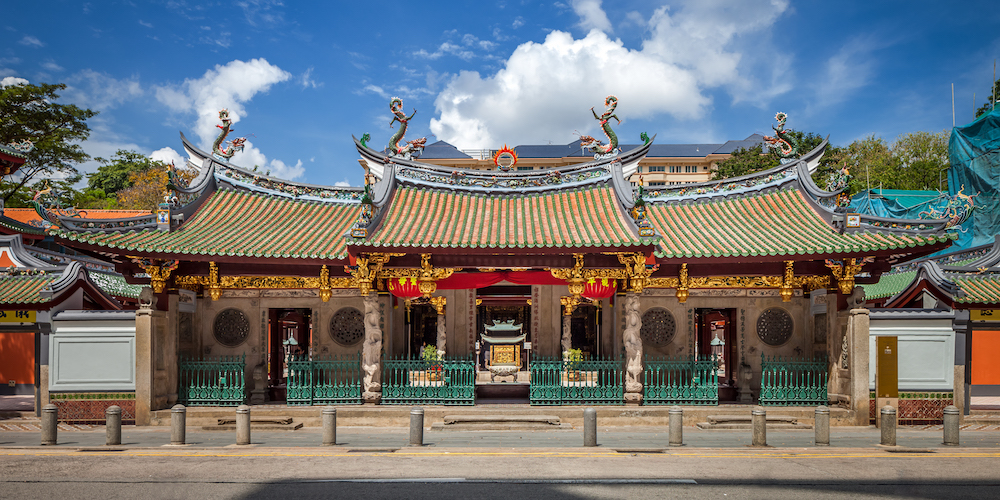This tall-footed jar is shaped after the archaic Chinese bronze drinking vessel known as 'hu'. It has a cup-like mouth, long slender neck and a bulbous middle. Both sides of the shoulder are applied with moulded taotie (monster) masks with ring handles. The neck and the body are decorated with bands of incised grooves, impressed vertical striations and zigzags. The jar is covered with an iridescent green glaze. It was used as 'mingqi' or burial ware.The practice of using lead-glazed burial wares had already started during the Han dynasty (206 BCE-220 CE) and it continued into the Ming period. The custom of burying objects with the deceased stems from the belief in life after death.




